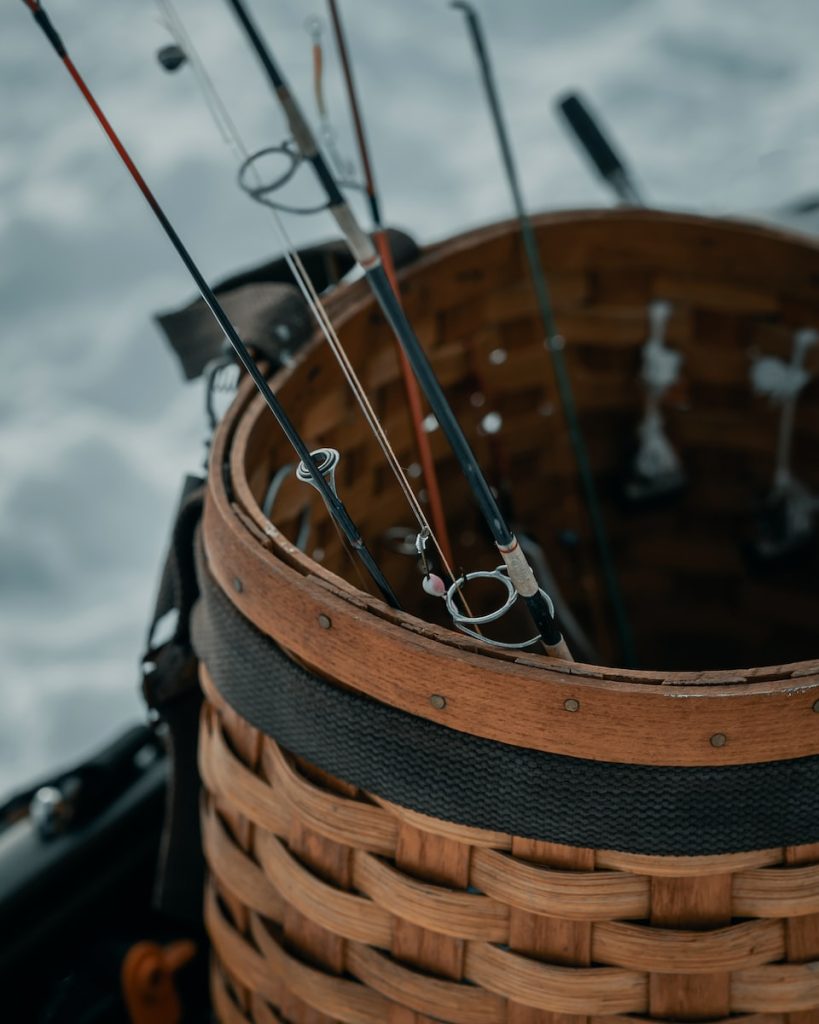Winter can be a magical season with its snowy landscapes and frosty air, but it can also be challenging to find outdoor activities. Ice fishing is an excellent option for those looking for a unique and exciting winter adventure. While it may seem intimidating to newcomers, ice fishing can be a fun and rewarding experience with a little preparation and know-how. In this beginner’s guide, we’ll cover everything you need to know to get started, from selecting the right gear to finding the perfect spot on the ice. So grab your warmest coat and join us as we explore the world of ice fishing and all the winter fun it offers.
What Is Ice Fishing?
Ice fishing is a popular winter pastime that involves fishing through a hole cut in the ice of a frozen body of water. It’s a unique way to enjoy the great outdoors during the cold months and a sport that has been around for centuries.
The first step to getting started with ice fishing is to find a suitable location. Many people choose to fish on frozen lakes, ponds, or rivers, but it’s important to ensure that the ice is safe and thick enough to support a person’s weight. Local fishing shops, tourism offices, and other resources can provide information about where to go and what to look for regarding ice safety.
Once you have a suitable location, the next step is to prepare your gear. You will need specialized equipment, including an ice auger to drill holes in the ice, an ice fishing rod, and a bait bucket. You’ll also want to dress warmly in layers and bring along plenty of food and water.
When it comes to actually fishing, there are a few different techniques to try. One popular method is jigging, which involves using a lure or bait to entice fish into biting. Another technique is tip-up fishing, which uses a small flag or indicator to signal when a fish has taken the bait.
Overall, ice fishing is a great way to experience the winter outdoors and enjoy the thrill of the catch. With the right gear, preparation, and location, it can be a fun and rewarding sport for beginners and experienced anglers alike.
Gear and Equipment

When it comes to ice fishing, having the right gear and equipment is essential to ensuring a successful and enjoyable experience. Here are some of the key items you’ll need to get started:
- Ice Auger: An ice auger is used to drill a hole in the ice where you’ll be fishing. Manual and powered options are available, and the size of the auger will depend on the type of fish you’re targeting.
- Ice Fishing Rod: Unlike traditional fishing rods, ice fishing rods are shorter and designed for use in small spaces. They’re also more sensitive to detect when a fish bites.
- Fishing Line: A strong, braided line is typically used for ice fishing, as it’s less likely to break in cold weather.
- Lures and Bait: There are a variety of lures and bait options to choose from, including jigs, spoons, and live bait like minnows or worms.
- Tip-Ups: Tip-ups are a type of fishing rig that uses a flag or indicator to show when a fish has taken the bait. They’re particularly useful when fishing for larger species like pike or walleye.
- Ice Scoop: An ice scoop clears any ice chips or debris from the fishing hole, allowing you to see the fish better.
- Shelter: Depending on the weather and location, a portable ice fishing shelter can protect from the elements and provide a place to warm up.
- Warm Clothing: It’s important to dress in layers and wear warm clothing that’s appropriate for the conditions. This includes a good winter jacket, insulated boots, gloves, and a hat.
Overall, having the right gear and equipment is crucial to having a successful and enjoyable ice fishing experience. It’s important to invest in quality gear that’s appropriate for the conditions and the type of fish you’re targeting.
Techniques to Know
Several techniques can be used for ice fishing, each with its own advantages and challenges. Here are a few of the most common techniques that beginners should know:
- Jigging: Jigging is a popular ice fishing technique involving a lure to attract fish and then moving it up and down to mimic a swimming action. This can be done by hand or with a specialized jigging rod, and it’s effective for catching various fish species.
- Tip-Ups: Tip-ups are a type of fishing rig that uses a flag or indicator to show when a fish has taken the bait. They’re particularly useful for fishing for larger species like pike or walleye, as they allow you to cover more area and keep an eye on multiple lines at once.
- Dead-Sticking: Dead-sticking involves dropping a baited line into the water and leaving it still, without any movement or jigging. This can be effective for catching less active fish or feeding in deeper waters.
- Trolling involves slowly dragging a lure or bait behind a moving vehicle or sled, such as an ATV or snowmobile. This technique can effectively cover a lot of ground and find active fish.
- Sight Fishing: Sight fishing is a technique that involves looking down the fishing hole to watch for fish and then dropping a bait line in front of them. This technique requires clear water and good visibility, but it can be very effective for catching fish that are visible near the surface.
Each technique has its own strengths and weaknesses, and the best one to use will depend on factors like the type of fish you’re targeting, the weather conditions, and the location. Experimenting with different techniques can be a fun and rewarding way to learn more about ice fishing and hone your skills.
Safety Tips
Ice fishing can be a fun and exciting winter activity, but prioritizing safety is important to avoid accidents and injuries. Here are some essential safety tips to keep in mind:
- Check the ice: Before heading out onto the ice, it’s important to check the thickness and safety of the ice. You should aim for at least 4 inches of clear, solid ice for walking and ice fishing. Avoid areas with cracks, holes, or thin ice.
- Wear appropriate clothing: Dress in layers and wear warm clothing that’s appropriate for the conditions. This includes a good winter jacket, insulated boots, gloves, and a hat. It’s also important to wear a life jacket or flotation device, particularly if you’re fishing alone or in unfamiliar waters.
- Bring safety equipment: Always bring along safety equipment like ice picks, which can be used to grip the ice and pull yourself out of the water if you fall in. You should also bring a cell phone or other communication device in case of emergencies.
- Don’t fish alone: It’s best to go ice fishing with a buddy or in a group, as this can help you stay safe and assist in emergencies.
- Be cautious around the fishing hole: Take care when moving around the fishing hole, as the ice may be slippery or unstable. Avoid standing too close to the hole’s edge, and watch your equipment to prevent it from falling in.
- Avoid alcohol: It’s important to avoid consuming alcohol while ice fishing, as it impairs judgment and can increase the risk of accidents and injuries.
By following these safety tips and exercising caution and common sense, you can enjoy a fun and rewarding ice fishing experience while minimizing the risk of accidents or injuries.
Conclusion: Benefits of Ice Fishing
In conclusion, ice fishing is a unique and enjoyable winter activity that offers a variety of benefits for outdoor enthusiasts. It provides an opportunity to connect with nature, experience the beauty of winter landscapes, catch various fish species, and develop new skills and techniques.
Ice fishing can be a great way to spend time with family and friends, and it offers a sense of challenge and adventure that can be very rewarding. With the right gear, equipment, and safety precautions, ice fishing can be a safe and enjoyable activity for people of all ages and skill levels.
Beyond the thrill of the catch, ice fishing can also provide a sense of relaxation and mindfulness, as it requires patience, focus, and attention to detail. It’s a chance to slow down, unplug from technology, and enjoy the simple pleasures of being outdoors in the winter.
Overall, ice fishing offers a unique and rewarding way to experience the winter season, and it’s an activity that’s well worth trying for anyone who loves the outdoors and wants to try something new.






























